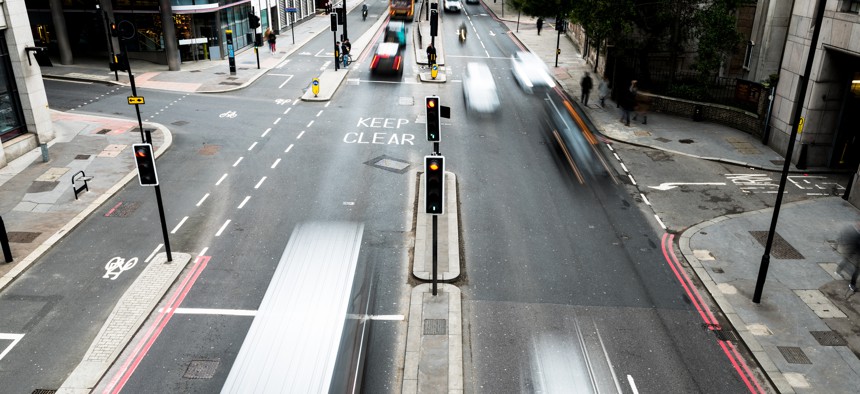Signals along 'Smart Spines' optimize traffic flow

Tim Grist Photography / Getty Images
With AI-powered adaptive signaling technology at nearly 150 city intersections, Pittsburgh plans to improve traffic flow and reduce idling times for buses.
By revamping close to 150 city intersections with adaptive signaling technology, Pittsburgh plans to improve traffic flow and decrease idling times for city buses.
The initiative will incorporate technology from Rapid Flow Technologies’ Scalable Urban Traffic Control program (Surtrac), an artificially intelligent adaptive signal control system first deployed in 2012, into eight high-priority traffic corridors, or “Smart Spines,” throughout Pittsburgh.
Surtrac uses cameras, sensors and radar technology to first capture real-time traffic conditions at each intersection. With that data, it creates an optimization plan for moving traffic through the intersection, which it then sends to the signal controllers in a specific intersection, to nearby signals and to connected vehicles.
“The original application was to decrease congestion and idling time in the neighborhood of East Liberty” where a number of redevelopment projects were already in progress, said Stan Caldwell, executive director of Carnegie Mellon University’s Traffic21 Institute.
The biggest takeaway from the decentralized adaptive signaling pilot was that adaptive signaling worked, even when circumstances unexpectedly changed.
At one point during the pilot, the nearby Highland Avenue bridge was shut down for close to six months, and “the signals never had to be retimed,” Caldwell said. “The signals changed themselves for the time period that the bridge was out, and the day that it was fully operational again, the signals readjusted themselves automatically.”
This demonstrated that the technology could also adapt to changes in population or land use patterns. Furthermore, the solution likely would save money because resource-strapped municipalities would not have to field engineers to periodically retime signals.
The project is now expanding to support integration of bus traffic.
By connecting buses to Surtrac, the system will have more data to analyze to improve traffic efficiency, Caldwell said.
“The idea is to have individual units [like buses] communicating with each other and informing decisions being made in real time,” CMU Metro21 Smart Cities Institute Executive Director Karen Lightman said. “The main thing is to give priority to high-occupancy vehicles so that instead of having a dedicated space on the roadway for [public transport], the system can improve traffic flow to the point where we don’t need a physical bus lane.”





